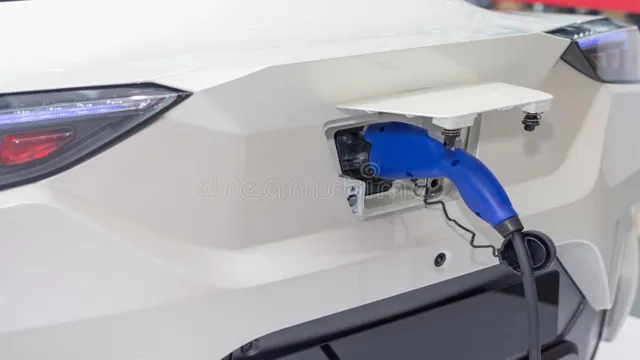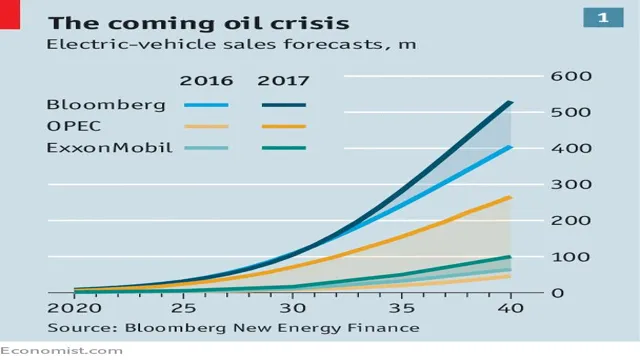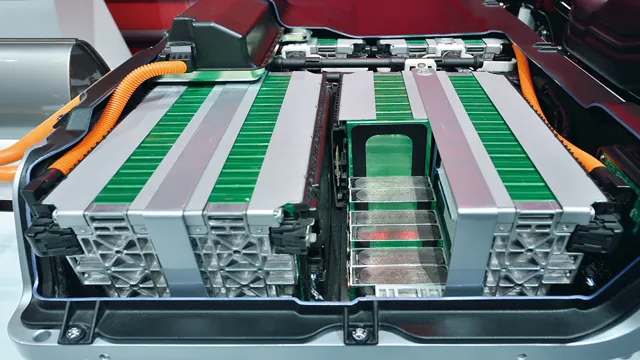Rev Up Your Knowledge: Everything You Need to Know About Electric Car Battery Charging Specifications
Electric cars have quickly become an increasingly popular alternative to gasoline cars, and with good reason. Not only do they have lower environmental impacts, but they also tend to have lower running costs. However, one of the biggest concerns when it comes to owning an electric car is the battery charging process.
Understanding how electric car battery charging works is crucial for any electric car owner. Here we will discuss everything you need to know about electric car battery charging. From charging station options and charging speeds, to charging etiquette and how to extend the life of your batteries, we’ve got you covered.
So buckle up and let’s dive into the world of electric car battery charging.
What are Electric Car Charging Specifications?
Electric car battery charging specifications are the guidelines that determine how fast and efficiently electric vehicles can be charged. These specifications vary depending on the type of electric vehicle and the charging station being used. For example, Level 1 charging, which uses a basic 120-volt wall outlet, can take up to 20 hours to fully charge an electric vehicle’s battery.
In contrast, Level 3 charging, also known as DC fast charging, can charge an electric vehicle to 80% in as little as 30 minutes, making it ideal for long-distance travel. When it comes to electric car battery charging specifications, it’s essential to understand which charging stations your vehicle can handle and how long it will take to charge your battery fully. With the rise in popularity of electric vehicles, it’s crucial for car manufacturers and charging station providers to work together to ensure that the charging process is as accessible and convenient as possible for all drivers.
Overview of EV Battery Charging
Electric car charging specifications refer to the technical requirements that electric vehicles need in order to charge appropriately. These specifications vary depending on the type of electric vehicle, the battery’s size, and the charging station’s capabilities. Electric car charging specifications are known as Levels, with Level 1 charging using a standard 120-volt AC outlet and providing only 4-5 miles of range per hour, while Level 2 requires a 240-volt AC power source and can provide up to 20-30 miles of range per hour.
Level 3 charging, also known as DC fast charging, uses high-voltage power to quickly charge the battery and can provide hundreds of miles of range in just 30 minutes. As electric vehicles become more popular, so too will the need for charging stations that can support these different levels of charging. By familiarizing themselves with the charging specifications of their electric cars, drivers can make informed decisions about when and where to charge their vehicles to keep them running smoothly.

Types of EV Charging: Level 1, 2, and 3
Electric Car Charging Specifications When it comes to charging your electric vehicle (EV), there are three levels of charging: Level 1, Level 2, and Level Level 1 charging utilizes a standard 120-volt outlet and can take up to 20 hours to fully charge your EV. Level 2 charging requires a 240-volt outlet and can take anywhere from 4-8 hours to fully charge your EV.
Lastly, Level 3 charging, also known as DC fast charging, is the quickest way to charge your EV and can provide up to 80% charge in as little as 30 minutes. It’s important to note that not all EVs are compatible with Level 3 charging, so it’s always best to check your vehicle’s specifications before attempting to use this method. Understanding the different charging levels and their specifications can help you determine which method of charging is best for your electric vehicle and lifestyle.
Charging Times and Power Requirements
When it comes to electric car battery charging specifications, it’s essential to understand the charging times and power requirements involved. Typically, the amount of time it takes to charge an electric car battery depends on the vehicle’s battery size, the charging level, and the charging station’s capability. For instance, a standard Level 1 charger takes about eight hours to charge a fully depleted battery, while a Level 2 charger can reduce that time to around 4 hours.
On the other hand, DC fast charging stations can replenish an electric car battery to around 80% in just 30 minutes. Power requirements for electric car charging also matter since they determine the charging rate and the charger’s cost. Higher-powered charging stations cost more but offer faster charging rates.
It’s important to note that the charging station’s capacity depends on the vehicle’s battery capacity, which can range from 30-100 kWh, and the charger’s output, which can go up to 350 kW. Therefore, understanding your electric car’s battery charging specifications is crucial to plan charging stops during long trips.
Factors Affecting Charging Times
The time it takes to charge a device can vary depending on a number of factors, including the power requirements of the device and the strength of the charging source. When it comes to power requirements, larger devices with bigger batteries will generally take longer to charge. The type of charger being used can also impact charging time, with fast chargers capable of delivering more power for faster charging times.
Additionally, the strength of the charging source can play a role, with weaker charging sources resulting in longer charging times. It’s important to keep these factors in mind when trying to optimize the charging time of your devices, as well as to use high-quality charging cables and adapters to ensure efficient charging.
Charging Power Requirements for Different EVs
When it comes to charging your electric vehicle (EV), the power requirement and charging time can vary based on the make and model. For instance, smaller EVs like the Nissan Leaf typically have slower charging requirements and can take up to 7 hours to fully charge on a 7 kW charger. Meanwhile, larger EVs like the Tesla Model S can require up to 11 kW of power and take around 4 hours to charge fully on a similar charger.
Additionally, some EVs like the Porsche Taycan can utilize high-speed chargers that can provide up to 270 kW of power, allowing for a 0-80% charge in just 25 minutes. It’s important to check your EV’s specifications to understand what charging requirements it needs and what kind of charging speeds are available in your local area.
With the right charging infrastructure, you can keep your EV powered up and ready for whatever journey lies ahead.
EV Charging Equipment and Infrastructure
When it comes to electric cars, one of the most important factors to consider is battery charging specifications. EV charging equipment and infrastructure plays a crucial role in how fast your car charges and how far it can go on a single charge. Electric car battery charging specifications vary depending on the type of car and the charger used.
Level 1 charging, which is the most basic type of charging, uses a standard 120-volt outlet and can take up to 20 hours to fully charge a car. Level 2 charging, which uses a 240-volt outlet, can charge a car in 4-8 hours depending on the charger’s power output. Finally, DC fast charging uses a high-powered charger and can fully charge a car in as little as 30 minutes.
It is important to know your electric car’s battery charging specifications to ensure that you have the correct equipment and infrastructure to charge your car in a timely manner and get the most out of your electric car experience.
Home Charging Station Options
Electric vehicle (EV) owners have a few options when it comes to charging their cars at home. One option is a Level 1 charger, which can be plugged into a standard 120-volt outlet and provides around 4 miles of range per hour of charging. However, this is the slowest charging option available.
Another option is a Level 2 charger, which requires professional installation and runs off a 240-volt circuit. Level 2 chargers provide around 25-30 miles of range per hour of charging and are much faster than Level Additionally, some electric utilities and EV manufacturers offer rebate programs to help offset the cost of installing a Level 2 charger.
It’s important to note that EV owners should consider their specific charging needs and take into account the cost of installation and potential rebates when deciding on a home charging solution. By choosing the right charging equipment and infrastructure, EV owners can ensure they have reliable access to a fully charged car whenever they need it.
Public Charging Station Networks
EV charging equipment In recent years, more and more electric vehicle owners are relying on public charging station networks to keep their cars operating smoothly. These networks are made up of charging equipment and infrastructure, including charging stations, connectors, and supporting software. EV charging equipment is typically designed to be user-friendly and offer a fast and reliable charging experience.
Infrastructure is just as important, since it describes the physical components required to keep the charging stations powered and connected to the internet. The growth of public charging station networks has been essential to the proliferation of electric vehicles, because it means that EV drivers can travel more freely and have more confidence in their vehicle’s reliability. With the latest EV charging equipment and infrastructure in place, public charging station networks are set to continue revolutionizing the way we travel and use electric cars, making it easier than ever to reduce our carbon footprint.
Battery Maintenance and Safety Tips
When it comes to electric car battery charging specifications, it’s important to pay close attention to your car’s owner manual and follow the recommended instructions. This will ensure that you’re not overcharging or undercharging your battery, which can cause irreversible damage and even potential safety hazards. Additionally, make sure to avoid charging your battery in extreme temperatures, as this can also cause harm to both the battery and yourself.
Keep in mind that proper battery maintenance is key to extending the lifespan of your electric car battery, so don’t neglect regular check-ups and cleanings. It’s also important to be aware of any warning signs, such as difficulty starting or decreased performance, and address them with a professional as soon as possible. By taking the necessary precautions and regularly maintaining your electric car battery, you can avoid any potential issues and ensure a smoother, safer driving experience.
Tips for Maximizing Battery Life
As our reliance on technology grows stronger, keeping our devices charged and ready to go becomes more important. One of the critical factors in maintaining your device’s battery life is proper battery maintenance and safety. First and foremost, always use the manufacturer’s recommended charger and cable.
Using third-party chargers can cause damage to your battery, decrease its lifespan, and even put you at risk of electrical shock. It’s also essential to avoid charging your device to 100% frequently and letting it drain completely. Instead, aim to keep your battery between 20% and 80% to reduce the stresses placed on it and extend its life.
Lastly, store your devices in a cool, dry environment and avoid exposing them to extreme temperatures and moisture. These simple battery maintenance tips will help maximize the battery life of your devices, keeping them running longer and more efficiently.
Safety Considerations when Charging EV Batteries
When charging your electric vehicle (EV) batteries, it’s important to consider safety measures to avoid potential hazards. It all starts with proper battery maintenance. Make sure to regularly inspect your battery for any signs of damage or wear and tear.
Also, keep the battery clean and dry, as any moisture can cause a short circuit. When connecting the charging cable, make sure there aren’t any loose wires or damaged connectors, and always follow the manufacturer’s instructions. It’s also important to have a dedicated charging station with a ground-fault circuit interrupter (GFCI) to protect against electric shocks.
And finally, never leave your EV charging unattended, as this could cause overheating and potentially put your safety at risk. Remember, by following these simple battery maintenance and safety tips, you can help ensure a smooth and safe charging experience for your EV. So, always be proactive and take the necessary precautions to protect yourself, your vehicle, and your environment.
Happy charging!
Conclusion
In conclusion, the specifications for electric car battery charging may seem technical and complex, but at its core, it’s all about finding the right balance between speed, efficiency, and safety. It’s like the ultimate game of Tetris, where each charging station and battery model must fit together perfectly to power our electric future. So, let’s plug in, charge up, and drive towards a brighter, cleaner tomorrow!”
FAQs
What are the recommended voltage and current specifications for charging an electric car battery?
The recommended voltage for charging an electric car battery is typically between 220-240 volts. The recommended current specification varies between car models, but ranges from 16-32 amps.
Can using a charging station with higher voltage than recommended damage an electric car battery?
Yes, using a charging station with voltage higher than the recommended specification can damage the electric car battery. It is always important to follow the manufacturer’s guidelines for charging the vehicle.
What is the typical charging time for an electric car battery?
The charging time for an electric car battery depends on the size of the battery, the type of charging station used, and the vehicle’s charging specifications. However, a standard 240V charging station can fully charge most electric cars between 8-12 hours.
Are there any safety precautions to consider when charging an electric car battery?
Yes, it is important to follow the manufacturer’s guidelines for charging the electric car battery and to use certified charging equipment. Always avoid charging the battery in extreme temperatures or environments, and never attempt to charge a damaged or leaking battery.





